Power meter pedals have revolutionized cycling training and performance analysis, offering a convenient and portable way to measure your wattage. For years, cyclists looking to quantify their efforts and track improvements have turned to power meters. Among the various types available, pedal-based power meters stand out for their ease of installation, bike portability, and accurate data collection. This guide dives deep into the world of Bike Power Meter Pedals, comparing leading models from Garmin, Wahoo, Favero, and SRM to help you make an informed decision in 2023.
Cleat Compatibility and Pricing: Key Considerations for Power Meter Pedals
When selecting bike power meter pedals, two primary factors often dominate the decision-making process: cleat compatibility and price. The type of cleats you currently use, or are willing to switch to, will immediately narrow down your options. Similarly, your budget will dictate which models are within reach. Let’s examine the cleat systems supported by each brand and their respective price points.
Cleat Systems:
- Garmin Rally Series: Offers the widest compatibility, supporting three major cleat types:
- Rally XC: SPD cleats, ideal for mountain biking, gravel riding, and indoor cycling.
- Rally RS: SPD-SL cleats, the standard for road cycling, providing a stable and efficient platform.
- Rally RK: Look KEO cleats, another popular road cycling cleat system, favored by many for their secure engagement.
- Favero Assioma: Primarily focuses on road cycling cleats:
- Look KEO Variant: Favero uses a “LOOK KEO compatible” cleat, which is slightly different from official LOOK KEO cleats. Favero includes their cleats in the box, and while minor differences exist, most users find them compatible with standard LOOK KEO pedals and shoes after a short break-in period.
- SPD-SL (Assioma DUO-Shi): Specifically designed to integrate with Shimano SPD-SL pedal bodies, offering SPD-SL cleat compatibility within the Assioma power meter system.
- SRM X-Power: Caters to off-road and flat pedal preferences:
- SPD: Compatible with Shimano SPD cleats, making them suitable for mountain biking, touring, and commuting.
- Flat Pedals: SRM also offers flat pedal bodies for the X-Power system, providing power measurement for riders who prefer flat pedals, often used in downhill or enduro mountain biking.
- Wahoo POWRLINK: Exclusively uses the Speedplay cleat system:
- Speedplay: Wahoo’s POWRLINK pedals are built around the Speedplay platform, known for its exceptional adjustability, dual-sided entry, and low stack height. Speedplay cleats are distinct from LOOK KEO or SPD-SL and offer a different riding experience.
All manufacturers include a set of their respective cleats with the purchase of their power meter pedals, ensuring you have everything needed to get started.
Pricing (Dual-Sided Power Meter Pedals):
- Garmin Rally Series:
- Rally SPD-SL (Rally RS): $1,099
- Rally Look KEO (Rally RK): $1,099
- Rally SPD (Rally XC): $1,199
- Favero Assioma:
- Assioma DUO (Look KEO Variant): $719
- Assioma DUO-Shi (SPD-SL Variant Spindles): $589 (spindles only, requires assembly with Shimano pedal bodies)
- SRM X-Power:
- SRM X-Power SPD: $1,299
- Wahoo POWRLINK:
- POWRLINK ZERO Speedplay: $999
It’s important to note that Favero offers the Assioma DUO-Shi as spindles only, requiring a DIY assembly with your own Shimano SPD-SL pedal bodies. This approach allows users to integrate the Assioma power meter into their preferred SPD-SL pedal system, often at a lower cost.
Single-sided versions are also available for all models at a lower price point, providing a more budget-friendly entry into power meter pedals. However, dual-sided power meters are generally recommended for more accurate power measurement and left/right leg balance data.
Single-Sided Power Meter Pedal Prices:
- Garmin Rally Series:
- Rally SPD-SL (Rally RS): $649
- Rally Look KEO (Rally RK): $649
- Rally SPD (Rally XC): $699
- Favero Assioma:
- Assioma UNO (Look KEO Variant): $459
- SRM X-Power:
- SRM X-Power SPD (Single-sided): $999
- Wahoo POWRLINK:
- POWRLINK ZERO Speedplay (Single-sided): $649
Garmin’s Rally system stands out with its spindle interchangeability. You can easily swap the power meter spindle between different Rally pedal bodies (SPD-SL, Look KEO, and SPD). This modular design is particularly beneficial for cyclists who ride different disciplines (road, mountain, gravel) and want to use the same power meter across multiple bikes. The Rally system is also backward compatible with Vector 3 spindles, offering upgrade options for existing Garmin power meter pedal users.
While Favero doesn’t offer official spindle swapping between cleat types, resourceful users have found ways to convert Assioma pedals from LOOK KEO to SPD, although this voids the warranty and may require shoe modifications.
Weight, Size, and Dimensions of Power Meter Pedals
Weight and size are often considerations for performance-oriented cyclists. Power meter pedals add a slight amount of weight compared to standard pedals. Understanding the weight and dimensions of different models can help you choose pedals that align with your preferences and riding style.
Pedal Weights (Individual Pedal, Excluding Cleats and Spacers):
- Garmin Rally Series:
- Rally RS (SPD-SL): 165g
- Rally RK (LOOK KEO): 165g
- Rally XC (SPD): 221g
- Favero Assioma:
- Assioma DUO (LOOK KEO Variant): 152g
- SRM X-Power:
- X-Power SPD: 172g
- Wahoo POWRLINK:
- POWRLINK ZERO Speedplay: 138g
Wahoo POWRLINK pedals appear to be the lightest in terms of pedal weight alone. However, the Speedplay system distributes some of the weight to the cleat. Therefore, a more comprehensive comparison considers the total system weight, including pedals and cleats.
Total System Weight (Pedals, Cleats, and Mounting Hardware, per pair):
- Favero Assioma LOOK-KEO: 382g (152g/pedal + 39g mounting/side)
- Garmin Rally Look KEO: 404g (165g/pedal + 37g mounting/side)
- Garmin Rally Shimano SPD-SL: 398g (159g/pedal + 40g mounting/side)
- Garmin Rally Shimano SPD: 512g (221g/pedal + 35g mounting/side)
- SRM X-Power SPD: 396g (172g/pedal + 26g mounting/side)
- Wahoo POWRLINK ZERO Speedplay: 432g (138g/pedal + ~78g mounting, including cleats/baseplate/screws)
While the Wahoo POWRLINK pedals are individually lighter, the Speedplay cleat system adds more weight, resulting in a slightly heavier total system weight compared to Favero and SRM SPD systems. Garmin’s SPD pedals are notably heavier due to the robust SPD pedal body design.
Spacers are often used during pedal installation to ensure proper clearance and prevent interference with crank arms. These spacers typically add a negligible amount of weight (around 1g per spacer).
Pedal Profiles and Dimensions:
Visual comparisons of pedal size and profile can also be helpful. The following images showcase the front, spindle-side, opposite side, and rear views of the compared power meter pedals:
The Speedplay pedal body of the Wahoo POWRLINK appears visually thinner, but remember that the overall system bulk is distributed between the pedal and cleat.
Installation and Setup of Power Meter Pedals
Ease of installation is a significant advantage of pedal-based power meters. All models discussed here are designed for straightforward installation, comparable to installing standard bike pedals.
Installation Tools:
- Garmin Rally Series: Requires a standard pedal wrench.
- Favero Assioma: Uses a hex wrench (Allen key) for installation.
- SRM X-Power: Requires a standard pedal wrench.
- Wahoo POWRLINK: Uses a hex wrench (Allen key) for installation.
The choice between a pedal wrench or hex wrench depends on the pedal spindle design and whether electronics are housed within the spindle. Both methods are equally simple for experienced cyclists.
Installation Process:
- Apply Grease: Apply a small amount of grease to the pedal threads to prevent seizing and ensure smooth installation and removal in the future.
- Thread by Hand: Start threading the pedals into the crank arms by hand, ensuring they are going in straight and smoothly.
- Tighten with Wrench: Use the appropriate tool (pedal wrench or hex wrench) to tighten the pedals securely. While specific torque values vary slightly, a snug fit is crucial for power meter pedals to ensure accurate readings and prevent loosening during rides. Avoid excessive overtightening, which can damage threads.
- Calibration and Crank Length Setting: After installation, perform a calibration (zero-offset) as recommended by the manufacturer. This ensures accurate power measurements. Additionally, verify and set the correct crank arm length in your cycling computer or the power meter’s companion app. Incorrect crank length settings will lead to inaccurate power readings.
Initial Setup and Calibration:
- Garmin, Favero, and Wahoo: These pedals automatically determine their orientation and position through internal software detection.
- SRM X-Power: Requires a one-time setup using the SRM app to specify the exact pedal position during initial installation. This is a quick process integrated into the crank length setting.
- Crank Length Setting: All power meter pedals require accurate crank length input for correct power calculation. This setting is typically configured via the manufacturer’s app and/or your cycling computer. Ensure the crank length is consistent across all devices connected to the power meter.
It’s recommended to perform a few hard sprints after installation, preferably on a stationary trainer, to fully seat the pedals and ensure they are securely tightened before your first outdoor ride.
Q-Factor, Stack Height, and Float: Understanding Pedal Geometry
Several geometric factors influence pedal feel and biomechanics. Q-Factor and stack height are often discussed in relation to pedal performance and rider comfort.
Q-Factor:
Q-Factor is the horizontal distance between the pedal attachment points on the crank arms. It essentially describes the width of your pedal stance. While some cyclists are highly sensitive to Q-Factor changes, the human body generally adapts to slight variations. Different bike types inherently have different Q-factors (e.g., road bikes vs. mountain bikes).
Q-Factor Measurements:
- Garmin Vector 3/Rally Series: 53mm (55mm with stock spacer)
- Favero Assioma: 54mm (55mm with stock spacer)
- Favero Assioma Shimano SPD-SL (DUO-Shi): 65mm (stock Ultegra SPD-SL pedal is 53mm for reference)
- SRM X-Power: 54mm
- Wahoo POWRLINK ZERO: 55mm (stock Speedplay Zero is 53mm, also available in 56/59/65mm spindle lengths)
Using pedal spacers can increase the Q-factor by 1-2mm per spacer. Spacers are often needed depending on crank arm design to prevent pedal body interference or chain clearance issues.
Stack Height:
Stack height is the vertical distance from the center of the pedal spindle to the sole of your cycling shoe. Lower stack height positions your foot closer to the pedal axle, which can improve pedaling efficiency and potentially increase cornering clearance.
Stack Height Measurements:
- Garmin Rally RS (Shimano SPD-SL): 12.2mm
- Garmin Rally XC (Shimano SPD): 13.5mm
- Garmin Rally RK (LOOK KEO): 12.2mm
- Favero Assioma (LOOK KEO): 10.5mm
- SRM X-POWER: 10.5mm
- Wahoo POWRLINK: 13mm
Favero Assioma and SRM X-Power pedals have the lowest stack heights among the compared models. While stack height is often associated with cornering ability, cornering clearance is influenced by both stack height and Q-factor, as well as crank arm length and bottom bracket height.
Float:
Float refers to the degree of rotational freedom your foot has while clipped into the pedal. Float is determined by the cleats, not the pedals themselves.
- Garmin & Favero: Include red cleats with 6 degrees of float.
- Wahoo Speedplay: Cleats offer adjustable float from 0 to 15 degrees, allowing for customization based on rider preference and biomechanics.
Maximum Rider Weight:
Manufacturers specify maximum rider weight limits for power meter pedals, primarily due to wattage output limitations related to sensor durability, rather than pedal structural integrity.
Maximum Rider Weight Limits:
- Garmin Rally & Vector Series: 105 kg (231 lbs)
- Favero Assioma: 120 kg (265 lbs)
- SRM X-POWER: No practical limit stated by SRM.
- Wahoo POWRLINK Zero: 113kg (250lbs)
These limits are generally generous and unlikely to be a concern for most cyclists.
Cornering Clearance with Power Meter Pedals
Cornering clearance is a practical consideration, especially for road cyclists who corner aggressively. It refers to the maximum lean angle achievable before the pedal or crank arm contacts the ground.
To assess cornering clearance, the lean angle at which the pedal touched the ground was measured using a consistent methodology. The tests were performed with 175mm crank arms, which are slightly longer than the standard 172.5mm, representing a more demanding scenario for cornering clearance.
Cornering Angle Measurements (Degrees):
- Garmin Rally SPD: 36°
- Garmin Rally SPD-SL: 37°
- Garmin Rally LOOK KEO: 37°
- Favero Assioma LOOK KEO: 38°
- Favero Assioma SPD-SL: 37°
- SRM X-Power SPD: 37°
- Wahoo POWRLINK Speedplay: 39°
The results show minimal differences in cornering clearance among the tested pedals, with Wahoo Speedplay offering a slightly greater lean angle. However, the wider Speedplay cleats may negate this advantage, potentially leading to cleat contact with the ground at similar lean angles.
Interestingly, the Favero Assioma DUO-Shi (SPD-SL variant with a 10mm longer Q-factor) exhibited virtually identical cornering clearance to the standard Assioma. This is attributed to the tapered design of the Ultegra pedal body used in the DUO-Shi, which mitigates the impact of the wider Q-factor on cornering angle.

Bottom bracket height also significantly influences cornering clearance. Bikes with higher bottom brackets will generally offer greater lean angles before pedal contact, as demonstrated by comparing cornering angles on different bikes with the same pedals and crank lengths. A small difference in bottom bracket height (e.g., 2mm) can result in a substantial change in cornering angle (e.g., 10°).
In practice, pedal strike during cornering is a rare occurrence for most cyclists, even with power meter pedals. The lean angles required to induce pedal strike are quite extreme, and it’s generally not a practical concern for typical road riding scenarios.
Battery Life, Connectivity, and Data Metrics
Power meter pedals rely on batteries for operation and wireless communication (ANT+ and Bluetooth Smart). Understanding battery types, battery life, and connectivity features is crucial for seamless power meter usage.
Battery Types and Battery Life:
- Garmin Rally: Uses user-replaceable CR1/3N coin cell batteries (two per pedal, one per side). Battery life is estimated at 120 hours with Cycling Dynamics enabled.
- Favero Assioma: Features integrated, rechargeable batteries. Battery life is approximately 50 hours per charge cycle.
- SRM X-Power: Employs integrated, rechargeable batteries. Battery life is claimed to be 30 hours, but newer versions may achieve 40-50 hours.
- Wahoo POWRLINK: Utilizes integrated, rechargeable batteries, offering a claimed battery life of 75 hours per charge.
Replaceable coin cell batteries in Garmin Rally pedals offer the convenience of swapping batteries on the go, while rechargeable batteries in Favero, SRM, and Wahoo pedals eliminate battery replacement costs and waste. However, rechargeable systems require periodic charging, and forgetting a charging cable during travel can be inconvenient. Wahoo uses USB-C for charging, while Favero and SRM use Micro-USB.
Status LEDs:
All four power meter pedal models incorporate status LEDs to indicate power-on status, battery level, and firmware update progress. LED locations vary slightly, with Garmin and SRM placing LEDs on the spindle end, and Favero and Wahoo integrating them into the pedal pods.
Wireless Connectivity (ANT+ and Bluetooth Smart):
All compared power meter pedals support dual ANT+ and Bluetooth Smart wireless connectivity, ensuring compatibility with a wide range of cycling computers, smartphones, and training apps.
Data Metrics Broadcast via ANT+ and Bluetooth Smart:
-
Core Power Metrics (All Models):
- Total Power
- Power Balance (Left/Right)
- Cadence (RPM)
-
Advanced Metrics (Garmin, Favero, SRM):
- Torque Effectiveness (ANT+) (Not Wahoo)
- Pedal Smoothness (ANT+) (Not Wahoo)
Currently, there are no standardized Bluetooth Smart profiles for Torque Effectiveness and Pedal Smoothness.
Concurrent Connections:
- ANT+: All models support unlimited concurrent ANT+ connections.
- Bluetooth Smart:
- Garmin: Up to 2 concurrent Bluetooth connections.
- Wahoo: Up to 3 concurrent Bluetooth connections.
- Favero & SRM: Single concurrent Bluetooth connection.
For optimal reliability, ANT+ is generally recommended for connecting to cycling computers, while Bluetooth Smart is commonly used for smartphone app connections. Bluetooth Smart-only head units may sometimes encounter compatibility issues with dual-sided power meters, potentially only pairing with one side.
Training Stress Score (TSS), Normalized Power (NP), and other advanced training metrics are calculated by the head unit or training platform, not directly by the power meter itself.
Advanced Pedaling Metrics (Cycling Dynamics):
Garmin and Favero power meter pedals support Cycling Dynamics, an ANT+ standard that provides detailed pedaling analysis metrics. SRM offers proprietary advanced pedaling metrics accessible through their app. Wahoo currently does not support Cycling Dynamics, citing a lack of perceived user value, but may introduce alternative advanced metrics in the future.
Garmin Cycling Dynamics Metrics:
Cycling Dynamics data can be displayed in real-time on compatible Garmin head units and analyzed post-ride in Garmin Connect. These metrics include:
- Platform Center Offset (PCO)
- Power Phase (Left and Right)
- Time Seated vs. Standing
- Power and Cadence while Seated vs. Standing
Cycling Dynamics can be used for bike fit analysis and to gain insights into pedaling technique, although some metrics are more geared towards data enthusiasts. Favero Assioma pedals support Cycling Dynamics but do not include Platform Center Offset (PCO).
Power Accuracy and Reliability
Power accuracy is paramount for any power meter. The models compared in this guide are all known for their accuracy and reliability, representing some of the top-performing power meter pedals available.
Power Accuracy Claims:
- Garmin Rally: +/- 1.0%
- Favero Assioma: +/- 1.0%
- SRM X-Power: +/- 1.5% (some sources list +/- 2.0%)
- Wahoo POWRLINK: +/- 1.0%
Real-world testing and long-term usage have generally validated these accuracy claims for all four models. Occasional minor discrepancies may occur, as with any power meter or trainer, but these pedals consistently deliver reliable power data for training and performance analysis. SRM EXAKT Look-KEO pedals, a previous SRM pedal model, are not included in this positive assessment due to historical accuracy concerns.
Following pre-ride zero-offset calibration procedures is crucial for maintaining optimal power accuracy with all power meter pedals.
Comparison Table: Power Meter Pedal Features
The table below provides a concise summary of the key features and specifications of the compared bike power meter pedals.
| Function/Feature | Wahoo POWRLINK ZERO (Dual-sided) | Garmin Rally Series | Favero Assioma Power Meter Pedals (Dual) | SRM X-Power |
|---|---|---|---|---|
| Price (Dual-sided) | $999 | $1,099 (SINGLE/DUAL) | $719 (single/dual) | $1,299 (SINGLE/DUAL) |
| Availability | Global | Global | Global | Most major markets |
| Measurement Type | Direct Force | Direct Force | Direct Force | Direct Force |
| Attachment Area | Pedal | Pedals | Pedal | Pedal |
| Cleat Compatibility | Speedplay cleats | SPD/SPD-SL/LOOK KEO | LOOK KEO COMPATIBLE CLEATS ONLY | Shimano SPD |
| Weight (per pedal) | 133g (plus cleat weight) | 159g SPD-SL/165g KEO/221g SPD | 150g (inclusive of pods) | 172g |
| Wireless Connectivity | ANT+/BLUETOOTH SMART (DUAL) | ANT+/Bluetooth Smart | ANT+/BLUETOOTH SMART (DUAL) | ANT+/Bluetooth Smart |
| Auto-On | Yes | Yes | Yes | Yes |
| Battery Type | Rechargeable | CR3/1N | Rechargeable | Recharageable |
| Battery Life | 75 Hours | 120-150 hours | 50 Hours | 30-40 hours |
| Battery Replacement | FACTORY (SUPPORT ISSUE ONLY) | User | FACTORY (SUPPORT ISSUE ONLY) | Factory (support issue only) |
| Low Battery Warning | Yes | Yes | Yes | Yes |
| Cadence Measurement | Yes | Yes | Yes | Yes |
| Firmware Updates | Yes | Yes | Yes | Yes |
| Left/Right Power Balance | Yes | Yes | Yes | Yes |
| Pedal Smoothness | No | Yes | Yes | Yes |
| Claimed Accuracy | +/- 1% | +/- 1% | +/- 1% | +/- 1.5% |
| Temperature Compensation | Yes | Yes | Yes | Yes |
| Auto-Zero Calibration | Yes | Yes | Yes | Yes |
| Manual Calibration | Yes | Yes | Yes | Yes |
| Static Weight Test | No | Yes | Yes | Yes |
| Phone App | Yes | Yes | Yes | Yes |
| Amazon Purchase Link | Link | Link | ||
| Backcountry.com Purchase Link | Link | Link | ||
| Competitive Cyclist Purchase Link | Link | Link | ||
| REI Purchase Link | Link | Link | ||
| Other Purchase Link | Link | |||
| Review Link | Link | Link | Link | Link |
Conclusion: Choosing the Right Power Meter Pedal for You
Power meter pedals offer a compelling blend of accuracy, portability, and ease of use, making them an excellent choice for cyclists seeking to train with power. The Garmin Rally, Wahoo POWRLINK, Favero Assioma, and SRM X-Power pedals all represent high-quality options, each with its unique strengths.
Key Considerations for Choosing Power Meter Pedals:
- Cleat Type: Your existing cleat preference or willingness to switch is a primary factor. Garmin Rally offers the broadest cleat compatibility, while Wahoo POWRLINK is Speedplay-specific, Favero Assioma focuses on LOOK KEO and SPD-SL, and SRM X-Power caters to SPD and flat pedal users.
- Price: Favero Assioma pedals are generally the most budget-friendly, while SRM X-Power and Garmin Rally tend to be at the higher end. Wahoo POWRLINK occupies a mid-range price point.
- Features: Consider desired features such as Cycling Dynamics (Garmin, Favero), battery life, weight, and ease of installation. Garmin Rally’s spindle interchangeability offers unique versatility.
- Reliability and Accuracy: All models discussed are reputable for power accuracy and reliability.
Alternatives to Power Meter Pedals:
While power meter pedals excel in portability and ease of switching between bikes, crank-based power meters offer another viable option. Crank spider-based power meters, in particular, provide accurate total power measurement and avoid potential crank arm compatibility issues associated with crank arm power meters, especially with newer Shimano cranksets. In many cases, two crank-based power meters can be purchased for the price of a single set of dual-sided power meter pedals.
Ultimately, the “best” bike power meter pedals depend on your individual needs, preferences, and budget. Consider your cleat system, desired features, and riding style to select the power meter pedals that will best enhance your cycling experience and training. All of the models reviewed here are excellent choices, providing reliable and accurate power data to help you achieve your cycling goals.
Support Us!
If you found this guide helpful and are considering purchasing bike power meter pedals or other cycling accessories, please support our site by using the affiliate links below. Your purchases through these links help us to continue providing in-depth reviews and content for the cycling community. Thank you for your support!
Garmin Rally Series
Amazon Backcountry $1,100 Competitive Cyclist $1,100 REI
Wahoo POWRLINK ZERO (Dual-sided)
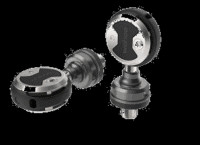
Backcountry Competitive Cyclist REI

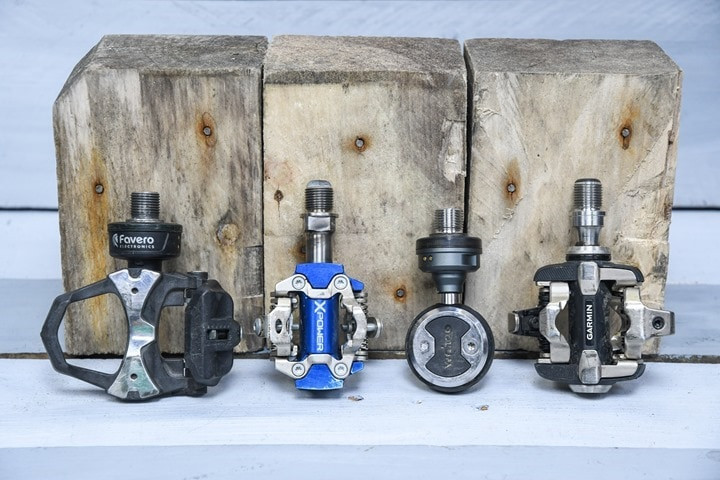
 DSC_9522
DSC_9522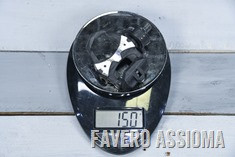 DSC_9526
DSC_9526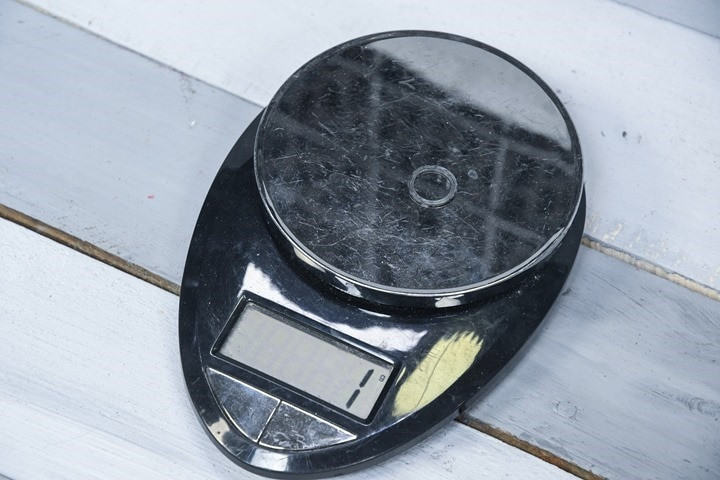 DSC_9531
DSC_9531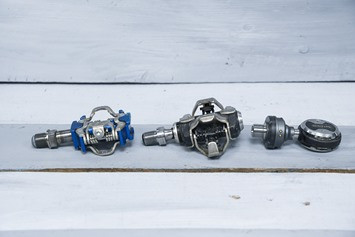 DSC_9536
DSC_9536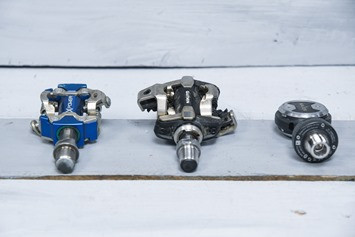 DSC_9537
DSC_9537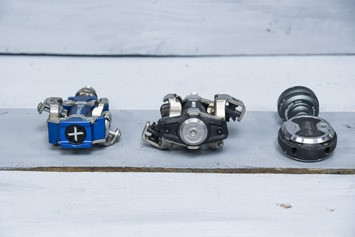 DSC_9540
DSC_9540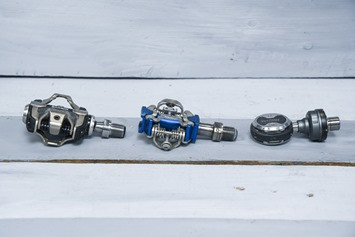 DSC_9542
DSC_9542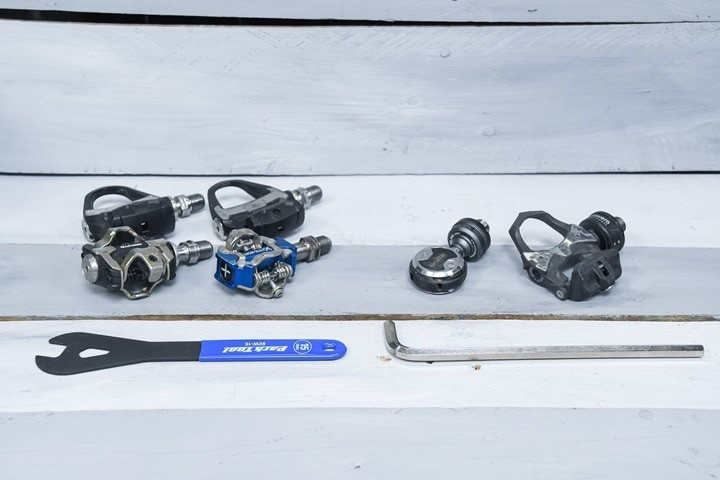 DSC_9544
DSC_9544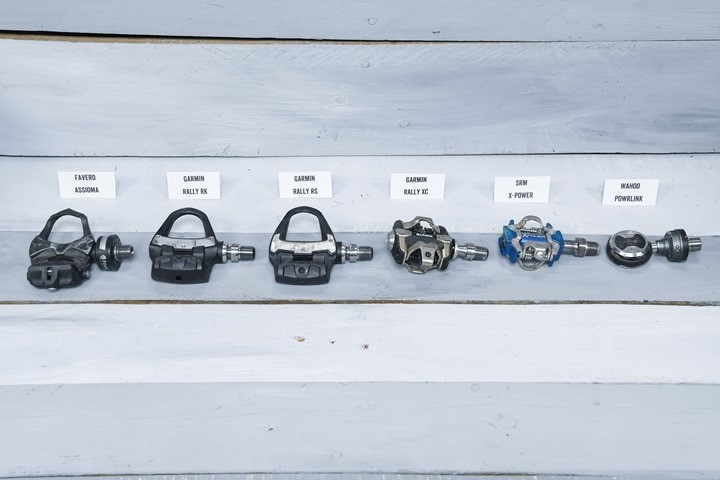 DSC_9741
DSC_9741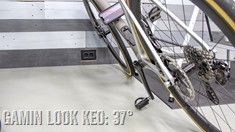 Garmin-KEO-Cornering
Garmin-KEO-Cornering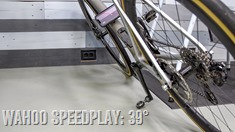 Wahoo-Powrlinkzero-Cornering
Wahoo-Powrlinkzero-Cornering image
image DSC_9594
DSC_9594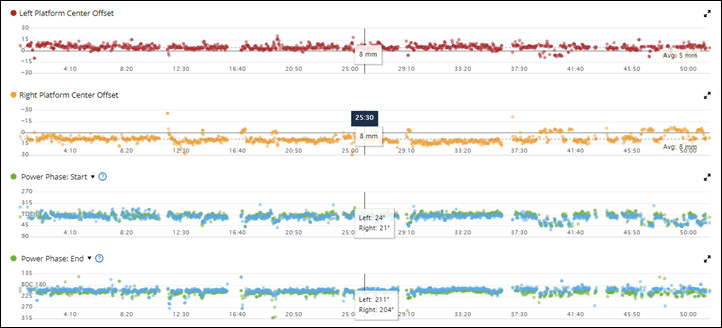 image
image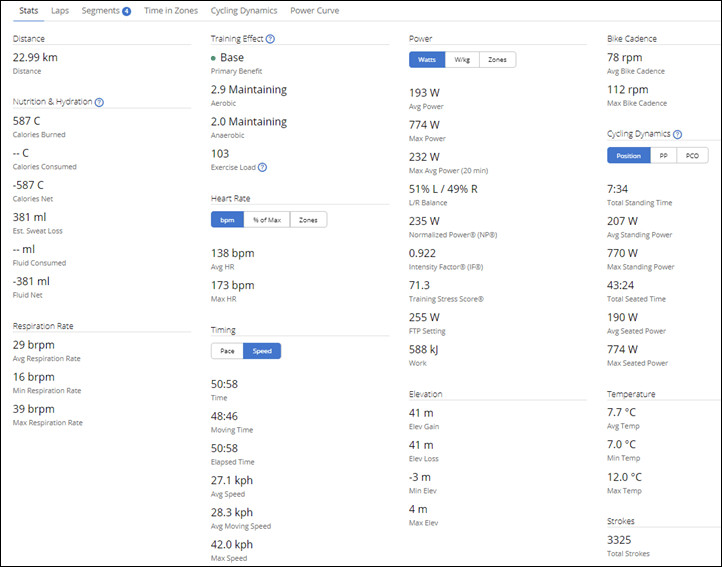 image
image image
image clip_image001
clip_image001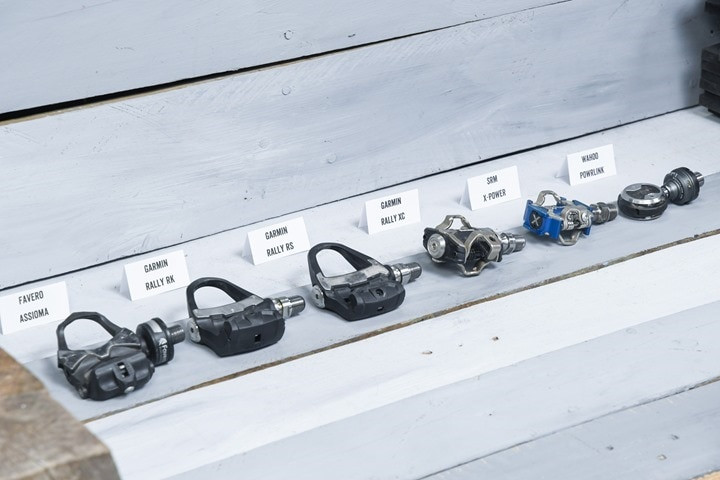 DSC_9744
DSC_9744